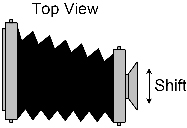Hello and welcome to part five of “the making of a commercial still”.
Last time I was really excited because I discovered a feature in Blender called “the fluid simulator”. I had seen a couple of demos and it looked really promising. I envisioned the perfume bottle surrounded by all sorts of water splashes, giving it that really slick look.
So last week I fiddled with the settings and generated dozens of splashes. Big ones, small ones, a lot of drops, few drops etc. I’ve dropped all sorts of objects in virtual water, just to see what kind of effect it had. Actually what you do is, you make a small little animation (about one second) of an object hitting the water. The program calculates each frame, one by one. At the end you can select which frame you are going to use for the image still. This is a really time consuming process. To generate a high resolution splash, you have to let the computer render overnight.
And the results were…..to be really honest…..a little disappointing!
Although it generates all sorts of splashes, it doesn’t look realistic enough, to my taste.
I’ve included two photo’s so you can see for yourselves:
I have set the fluid to act like water (oil is a possibility too), but it doesn’t look like water to me. It has a plastic, or glue-ish kinda feel to it. I don’t know what it is? Not only that, but it generates all sorts of weird artefacts. You can see in the upper picture that the small droplets have these black ’things’ around them. Like there is some bug in the program.
Anyway, I don’t consider this to usable for realistic and commercial use.
So it’s back to the drawing board. First I have to think about how pimp this image in another way.
Next time you will see the results.










